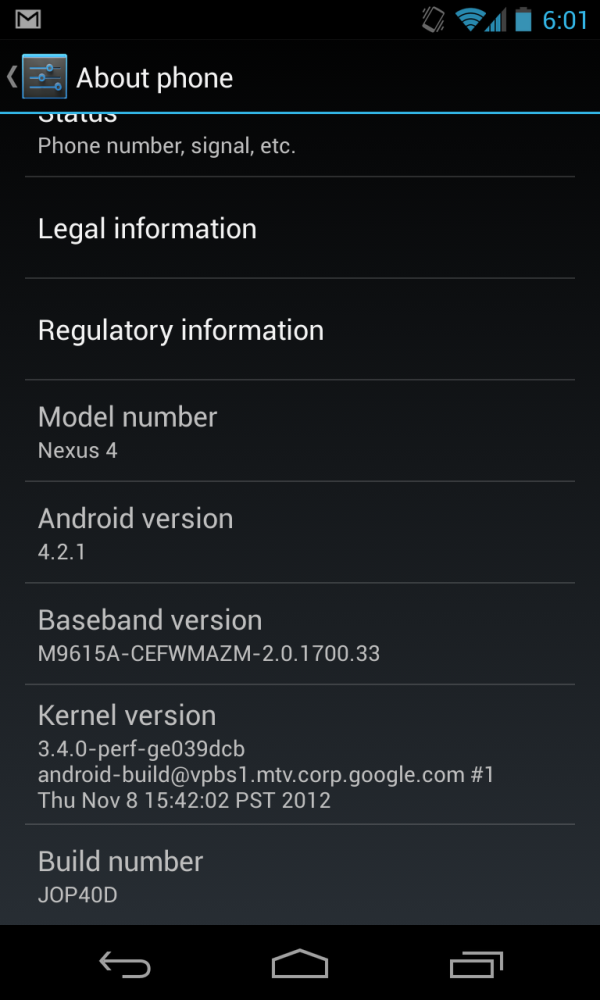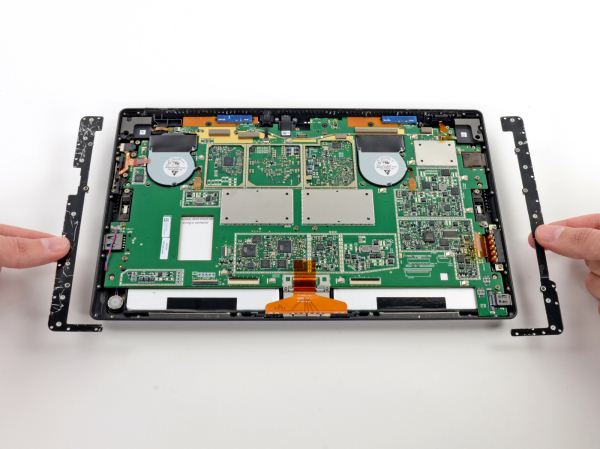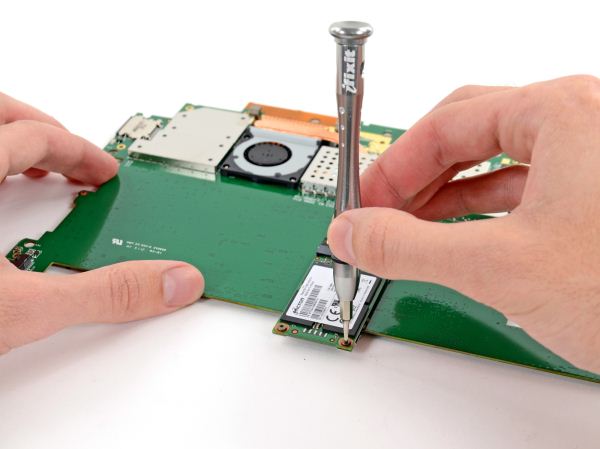AnandTech Article Channel |
- Nanoxia Deep Silence 2 Case Review: Trimming the Fat
- Nexus 4 JDQ39 4.2.2 OTA Update Removes Unofficial LTE on Band 4
- Apple Cuts Pricing on MacBook Pro with Retina Display and SSD Upgrades
- Microsoft Surface Pro Teardown: mSATA SSD Inside
| Nanoxia Deep Silence 2 Case Review: Trimming the Fat Posted: 13 Feb 2013 08:01 PM PST Just recently we had a chance to review Nanoxia's Deep Silence 1, arguably the most impressive silent case we've ever tested. Nanoxia was able to produce an enclosure capable of delivering substantial air flow to components while still containing fan noise. In a market where silent cases usually lose a lot of their luster once overclocking enters the picture, the Deep Silence 1 was a breath of fresh air and proof that you could build a powerful system that you never had to hear. In a bid to capture some of that sweet, sweet boutique volume, Nanoxia has refreshed the Deep Silence 1 into a slightly less expensive enclosure: the Deep Silence 2. The DS2 is an odd bird; it's a trimmed down DS1, but not heavily so, and in certain ways it can feel like a refinement. That all sounds incredibly promising, but did Nanoxia lose some of the potency of the original chassis in the process? | ||||||||||||||||||||||||||||||||||||||||||||||||||||||||||||||||||||||||||||||||||||
| Nexus 4 JDQ39 4.2.2 OTA Update Removes Unofficial LTE on Band 4 Posted: 13 Feb 2013 05:15 PM PST Just after it launched, we discussed how the Nexus 4 included undocumented support for LTE on Band 4 (AWS) which could be enabled simply by choosing the appropriate RAT (Radio Access Technology) under Phone Info (by dialing *#*#4636#*#* - INFO). Back then, I noted that it was highly unlikely this would stick around for very long without the proper FCC paperwork, and although it took a bit longer than I expected, today's 4.2.2 update does away with this unofficial support for LTE entirely. The OTA update for the Nexus 4 includes both software changes to Android (4.2.2 build JDQ39) along with a new baseband software image in the form of a delta update (radio.img.p). I tested the Nexus 4 the same way as I did in the previous article, on an Anritsu MD8475A base station emulator, which enables me to test any configuration or band network, and setup a Band 4 LTE network to attach the Nexus 4 to. Before the OTA update, with the appropriate "LTE Only" selection made in the aforementioned "Phone Info" menu for preferred network type, the Nexus 4 would quickly attach to Band 4 LTE. After applying the update, the handset no longer attaches at all. In addition, trying to select the "LTE Only" preferred network type now quickly changes back to "WCDMA Preferred," likewise choosing one of the other modes which include LTE results in a change back to "WCDMA Preferred" after exiting and coming back. Previously this setting would persist until a reboot took place. I'm not surprised that undocumented LTE on Band 4 was removed, I am surprised however that it took this long. This also settles any lingering questions about LG Electronics filing for a Class II permissive change for the Nexus 4 to enable LTE on the bands supported by the hardware. If having support for LTE on Band 4 on your Nexus 4 is important to you, I'd recommend holding off on updating with the OTA zip for now, no doubt people will also make their own update images without the radio update as well. The Android 4.2.2 update includes a number of other small changes as noted by other users, including enhanced quick toggles that can be long pressed to toggle WiFi or Bluetooth. Source: Google (OTA .zip link) | ||||||||||||||||||||||||||||||||||||||||||||||||||||||||||||||||||||||||||||||||||||
| Apple Cuts Pricing on MacBook Pro with Retina Display and SSD Upgrades Posted: 13 Feb 2013 07:44 AM PST Earlier this morning Apple announced a combination of price cuts and spec updates to its MacBook Pro with Retina Display lineup. The price cuts impact the 13-inch rMBP, while the spec bumps extend across almost all models. The good news is the price of the base and upgraded 13-inch rMBPs have dropped to $1499 and $1699, respectively. The 15-inch model remains untouched. The upgraded 13-inch rMBP configuration has a slightly faster Core i5 CPU (2.6GHz base clock instead of 2.5GHz, I believe this is a Core i5-3230M). The faster CPUs are nice to see, especially since that's really the only way to improve UI performance at this point until Apple brings some more software tweaks to OS X. On the 15-inch side, both configurations get a 100MHz faster base clock (i7-3635QM and i7-3740QM most likely). The upgraded 15-inch model now comes with 16GB of DDR3L-1600 by default.
While default storage configurations don't change, SSD upgrade pricing does. The 512GB and 768GB SSD upgrades drop in price a bit depending on what configuration you're looking at. For the upgraded 15-inch model, moving to a 768GB SSD is now a $400 upgrade. That's not a lot for a 768GB drive, but it doesn't take into account the cost of the base 512GB SSD you are paying for but don't get to keep.
Overall these are welcome changes to pricing and specs. It was clear from the start that the MacBook Pro with Retina Display would eventually fall down to more reasonable prices, and this is likely the beginning of that curve. As high DPI displays become more commonplace, we'll see continued decline in the pricing department. These price cuts do come several months before the introduction of Haswell based rMBPs. Haswell's impact on the rMBP should be greatest on the 13-inch model, where the improved GPU performance will be able to make up for the fact that there's no discrete GPU (assuming Apple integrates Haswell GT3e silicon). You'll also see modest gains in idle power consumption, but the big platform battery life gains really come with Haswell ULx chips which we won't see until closer to the end of the year and will be used in tablets/convertibles. | ||||||||||||||||||||||||||||||||||||||||||||||||||||||||||||||||||||||||||||||||||||
| Microsoft Surface Pro Teardown: mSATA SSD Inside Posted: 13 Feb 2013 07:04 AM PST After we published our Surface Pro review I went back and updated it to confirm that the SSD inside was indeed of the mSATA variety. My particular review sample used a Micron C400 mSATA SSD, similar to what I reviewed here a while back. Today, the patient folks at iFixit tore their Surface Pro apart and offered visual confirmation: the Surface Pro SSD is mSATA and technically, if you can get inside the system, it can be upgraded. While I applaud Microsoft for sticking with an industry standard SSD interface and not something proprietary, iFixit discovered that getting into Surface Pro isn't all that easy. While Surface RT was built from three discrete pieces of VaporMg (kickstand, frame and back panel), Surface Pro only has two (kickstand and the frame with integrated back). The downside to this simplification is that the only way into Surface Pro is to soften the adhesive that holds the display stack in place and pry it out. This tends to be a potentially destructive way of getting into a device, so if you're planning on buying a 64GB Surface Pro and upgrading to a larger SSD yourself you might want to keep this in mind. If you're still undeterred, it looks like you should be able to at least physically swap the Surface Pro SSD with something bigger. There's a whole other discussion about compatibility - I'm not sure what has been tested and validated with Surface Pro, but from a physical standpoint the SSD is upgradeable. | ||||||||||||||||||||||||||||||||||||||||||||||||||||||||||||||||||||||||||||||||||||
| You are subscribed to email updates from AnandTech To stop receiving these emails, you may unsubscribe now. | Email delivery powered by Google |
| Google Inc., 20 West Kinzie, Chicago IL USA 60610 | |

.jpg)







No comments:
Post a Comment